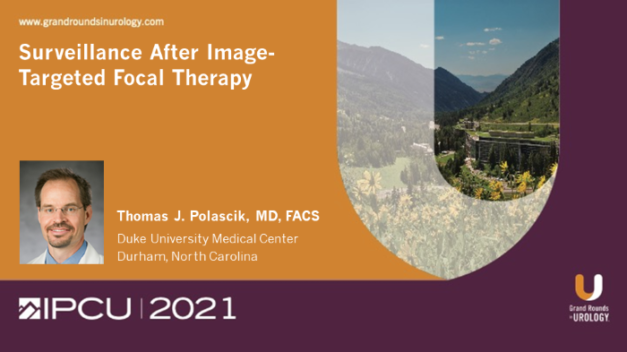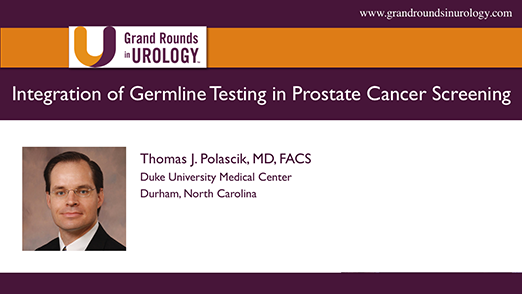Surveillance After Image-Targeted Focal Therapy
Thomas J. Polascik, MD, FACS, Professor of Surgery at Duke University and Director of Surgical Technology at the Duke Prostate and Urological Cancer Center, discusses the process of active surveillance and retreatment after image-targeted focal therapy (FT). He begins by describing cancer control and how it may fail. Dr. Polascik then defines intermediate to long-term treatment success as eradication of all aggressive or clinically significant disease in the treated zone, and treatment failure as a significant volume of .2 cc or greater of GS 3+4 in the treated zone and development of any foci of clinically significant cancer requiring further therapy. He cites several studies as contributing to the conclusion that PSA alone is insufficient in defining oncological success, and that a targeted and systematic biopsy should be done 6 to 12 months post-treatment based on rising PSA or suspicious mpMRI lesions. Dr. Polascik then reviews a study outlining guidelines for post-treatment FT for localized prostate cancer in clinical practice. He outlines FT failure through the categories of ablation, targeting, and selection failure, which respectively consist of leaving a tumor in the ablation area, energy not being correctly applied to the tumor, and a patient being inappropriately selected for FT. Dr. Polascik then discusses repeat FT, stating that it is recommended when the reasons for the initial failure can be identified and corrected. He cites Donaldson et al. as showing that FT retreatment rates below 20% are clinically acceptable, any subsequent whole gland therapy reflects a failure of focal therapy, and that a retreatment rate of below 10% with whole gland therapy is clinically acceptable. He concludes by stating that functional outcomes will be clear at between 12 and 18 months post-treatment and by recommending that a post-ablation targeted biopsy of the ablation zone and any new lesions be done between 6 and 12 months post-treatment and possibly 5 years post-treatment, and that PSA density be used for surveillance.
Read More





